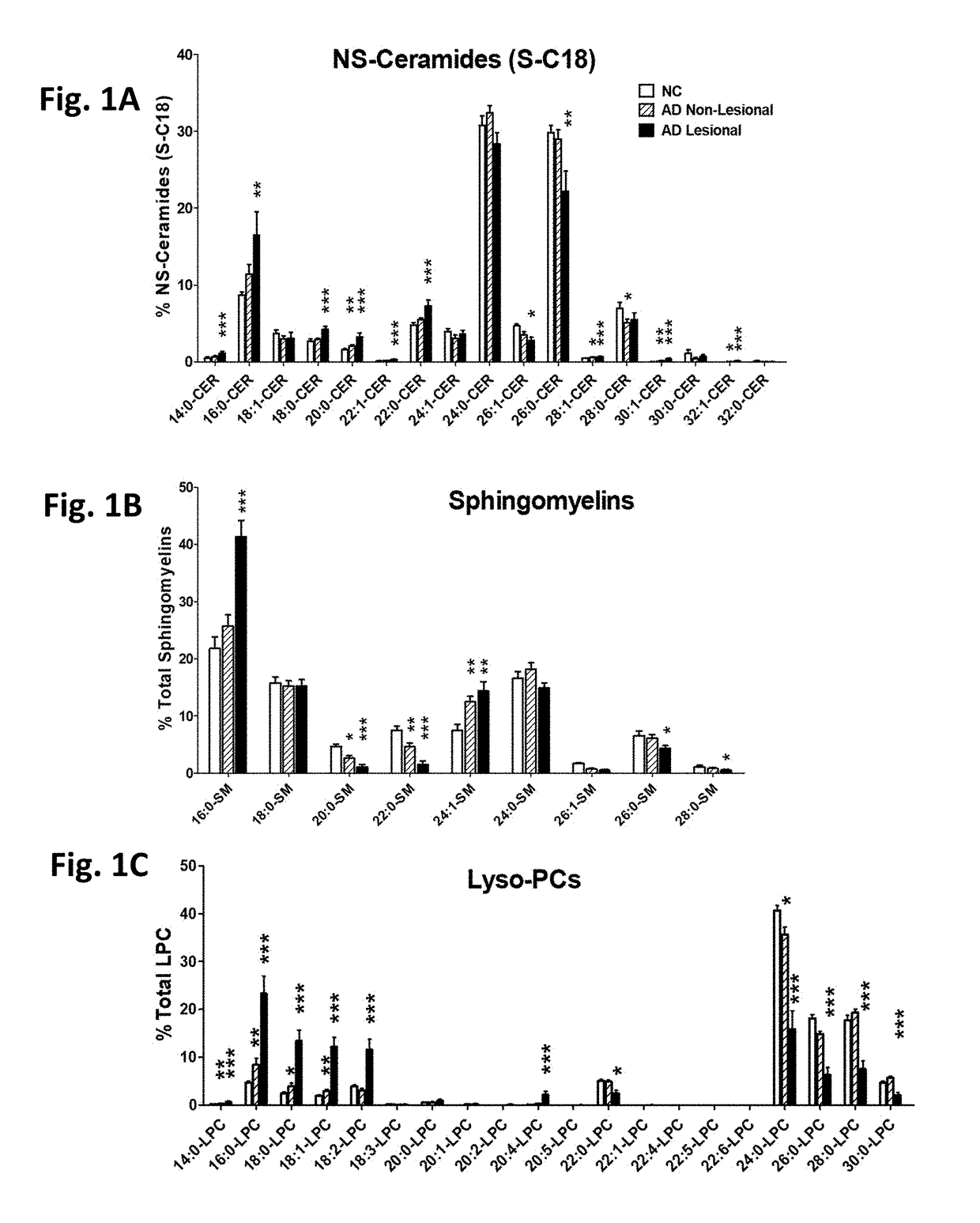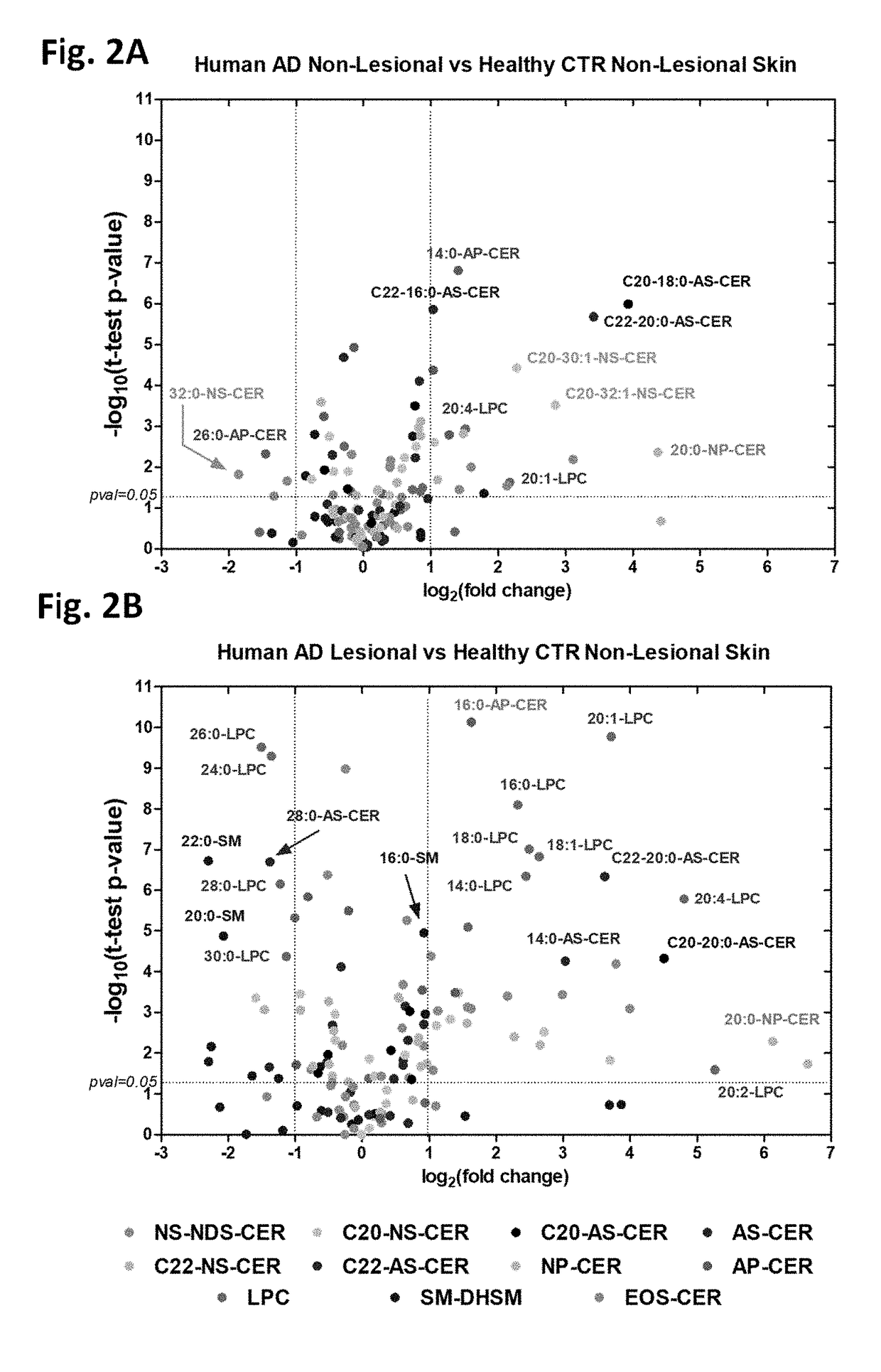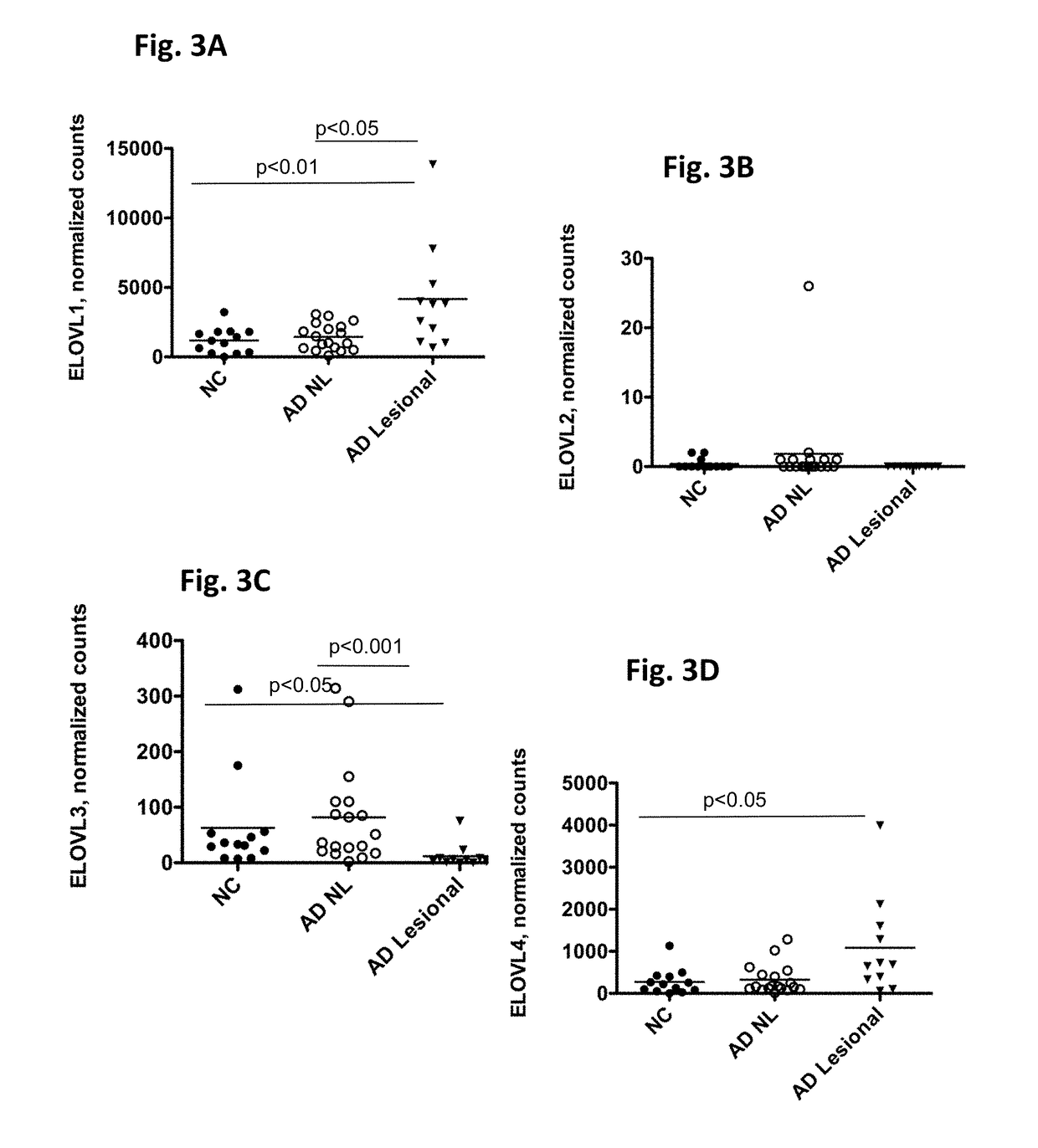Lipid Abnormalities and Association with Atopic Allergic Diseases
- Summary
- Abstract
- Description
- Claims
- Application Information
AI Technical Summary
Benefits of technology
Problems solved by technology
Method used
Image
Examples
example 1
[0096]This example shows lipid abnormalities are associated with skin lesions in atopic dermatitis.
[0097]Methods: Lipid profiles from skin tape strips of 15 healthy controls, 20 AD and 5 psoriasis patients were analyzed by targeted liquid chromatography tandem mass spectrometry and lipid pathway transcriptome by RNAseq.
[0098]Results: The relative proportion of sphingolipids with long-chain fatty acids (C22-C32) was decreased in lesional AD skin (Mean±SD 73.9±4.1%, 80.4±5.5% of total ceramides for AD lesional skin and normal skin, respectively, p<0.05) while short-chain fatty acid sphingolipids (C14-C20) were increased in AD. A similar pattern was observed in skin free fatty acids. Parallel significant changes in the expression of enzymes involved in sphingolipid metabolism were found in AD lesional skin by RNAseq (fatty acid elongases ELOVL1, ELOVL4 (increased), ELOVL3, ELOVL6 (decreased); enzymes and regulators of de novo shingolipid biosynthesis SPTLC2 (increased), ORMDL3 (decreas...
example 2
[0100]This example shows that human AD skin has a characteristic decrease in very long chain fatty acids within several classes of lipids.
[0101]Ceramides in the stratum corneum of AD skin undergo reduced chain length elongation of their N-linked fatty acid that can contribute to their total diminished hydrophobicity (Feingold K R, and Elias P M. Role of lipids in the formation and maintenance of the cutaneous permeability barrier. Biochim Biophys Acta. 2014; 1841(3):280-94). To determine if this is a global characteristic of AD skin lipids rather than a ceramide-specific phenomenon, stratum corneum ceramides as well as sphingomyelin (SM) and lysophosphatidylcholine (LPC) molecular species were anyalyzed by high performance liquid chromatography electrospray ionization tandem mass spectrometry (UHPLC-ESI-MS / MS). In this study, analysis of skin tape strips from 25 normal healthy controls, 30 AD non-lesional skin samples and 15 matching AD lesional skin samples demonstrated that AD is ...
example 3
[0104]This example shows lipid changes in skin tape strips from IL-13 transgenic mice recapitulate lipid phenotype observed in human AD lesional skin.
[0105]K5-tTA-IL-13 transgenic (IL-13-TG) mice have been previously developed (Zheng T, et al. Transgenic expression of interleukin-13 in the skin induces a pruritic dermatitis and skin remodeling. J Invest Dermatol. 2009; 129(3):742-51; Oh M H, et al. IL-13 induces skin fibrosis in atopic dermatitis by thymic stromal lymphopoietin. J Immunol. 2011; 186(12): 7232-42). In these mice, IL-13 expression is driven by a keratinocyte-specific promoter upon removal of doxycycline (DOX). As a result, these mice spontaneously develop severe atopic skin lesions 2-4 months after the induction of IL-13 expression in the skin and therefore provide a good model for AD development in humans. Skin tape strip samples were analyzed from six animals that developed AD lesions, eight non-lesional areas from animals that either developed skin lesions (6 anima...
PUM
| Property | Measurement | Unit |
|---|---|---|
| Therapeutic | aaaaa | aaaaa |
| Level | aaaaa | aaaaa |
Abstract
Description
Claims
Application Information
 Login to View More
Login to View More - R&D
- Intellectual Property
- Life Sciences
- Materials
- Tech Scout
- Unparalleled Data Quality
- Higher Quality Content
- 60% Fewer Hallucinations
Browse by: Latest US Patents, China's latest patents, Technical Efficacy Thesaurus, Application Domain, Technology Topic, Popular Technical Reports.
© 2025 PatSnap. All rights reserved.Legal|Privacy policy|Modern Slavery Act Transparency Statement|Sitemap|About US| Contact US: help@patsnap.com



